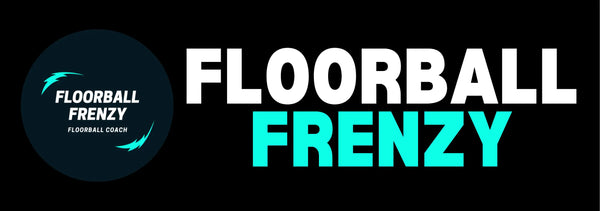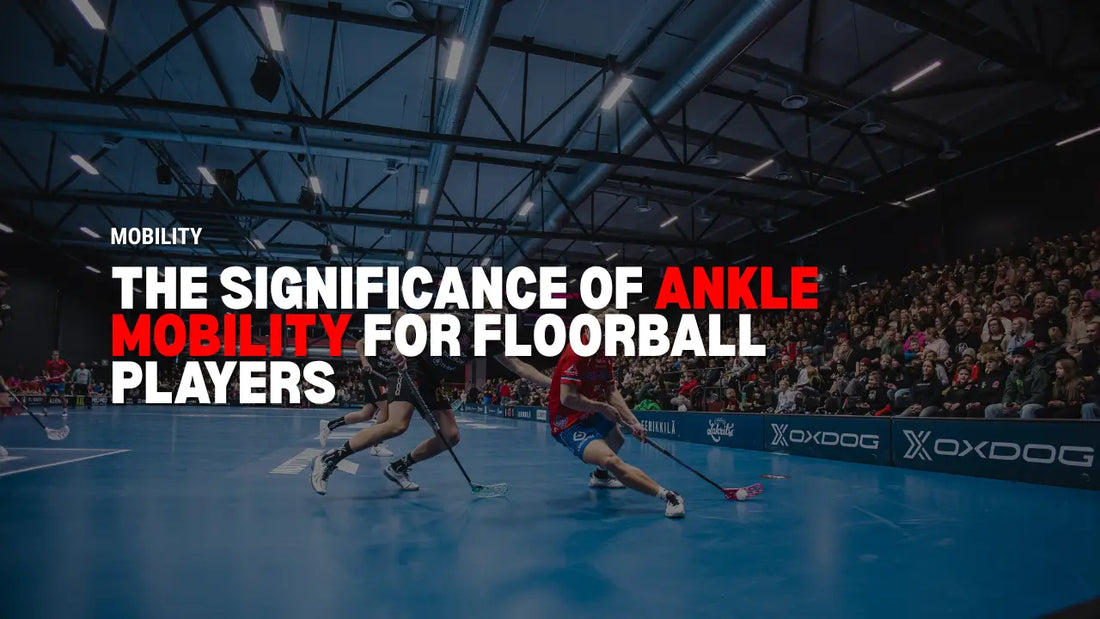Why Floorball Players Need to Take Ankle Mobility Seriously
Floorball players carry a lot of dysfunctions in their body.
Even without the brutal contact of ice hockey, the floorball stride itself puts players in a position that creates imbalances, overly tight hips, and rounded backs and shoulders. Add in the long training weeks, tournaments, and heavy match loads, and these issues quickly pile up.
While more players are becoming mindful of mobility, stretching, and self-myofascial release, most of the focus ends up on the hips and shoulders. What often gets overlooked is one joint that directly impacts movement quality and performance: the ankle.
And the truth is, many floorball players are leaving performance untapped simply because they lack proper ankle mobility.
Ankle Mobility’s Effect Off the Court: Kinetic Chains
To understand the ankle’s role in floorball movement, it helps to look at “kinetic chains.” In biomechanics, every joint affects another — creating a chain of movement.
This is powerful when everything works well, but it also means that limited range at one joint forces compensation elsewhere. For example, when an athlete has poor ankle mobility, it often shows up in squats or lunges. Instead of keeping good depth and posture, they round the back or shift forward into a quad-dominant pattern.
This not only weakens performance but also increases injury risk due to poor loading mechanics.
In floorball, this could mean less efficient strides, reduced acceleration, and weaker stability in low defensive positions. Off the court, athletes who default to quad-dominant activation are often leaving their glutes — the true powerhouse of the stride — underutilized.
Simply put: if your ankles are locked up, your entire movement chain suffers.
The Floorball Shoe & Ankle Mechanics
Unlike hockey, floorball players don’t deal with stiff skate boots — but court shoes still influence ankle mechanics.
Indoor shoes are designed for stability, grip, and support during fast lateral changes. While this is great for preventing rolled ankles, over time, the support and lack of deep ankle loading can actually reduce natural mobility.
Think about it: when you’re always braced and supported by stiff-soled shoes, you’re not training the ankle to move through its full natural range. Combine this with hours of crouched stance positions and explosive side-to-side pushes, and you’ve got a recipe for restricted mobility.
That’s why structured off-court training for ankle mobility is crucial — especially for youth players still developing their mechanics.
Why Ankle Mobility Matters for Floorball Performance
From my experience, the floorball players with the cleanest mechanics in the gym — particularly in squats and lunges — are often the ones with the smoothest, fastest strides on the court.
It makes sense: if you can’t get into efficient positions off the court, you won’t be able to express them in high-speed game situations.
Research backs this up. A kinematic study on stride efficiency found that greater ankle dorsiflexion allows athletes to stay in a deeper, more crouched athletic stance — leading to increased speed and efficiency in stride mechanics (Tidman, 2009). While that study was in hockey, the biomechanics apply directly to floorball too.
The Bottom Line
Floorball players are finally starting to understand the role mobility plays in reducing injuries and boosting performance. But most still overlook the ankles.
Your hips and shoulders matter, yes. But your ankles are the foundation — and if you ignore them, you’re cutting yourself off from your true speed, explosiveness, and stability.
So if you want to unlock your full stride potential and dominate the court, ankle mobility needs to be a permanent part of your warm-ups and off-court training.
Want to put this into action right away?
When you grab any product from FloorballFrenzy.com, you’ll also receive:
- BONUS: Mobility & Stretching Guide for Floorball – including ankle-specific drills to build smoother, faster strides.
- BONUS #2: Travel Workouts for Floorball Players – keep your training sharp even when you’re away from the gym.
- BONUS #3: Game-Day Nutrition Blueprint – fuel up properly so your mobility work actually translates to speed and power.
These guides are built to turn knowledge into results — making sure your improved ankle mobility pays off where it matters most: on the court.

